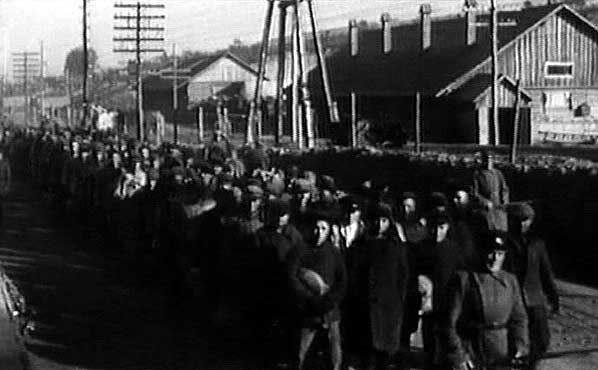Gulags
The Gulag was the government agency that administered the Soviet forced-labor camp system during the Stalin era (roughly 1929 to 1953). The term is an acronym for Glavnoye Upravleniye Lagerei (Chief Administration of Camps), but it became a global term used to denote the entire vast, brutal network of forced-labor camps, transit prisons, and detention centers that spanned the Soviet Union. The primary purpose of the Gulag was to serve as a tool of political repression—imprisoning dissidents, counter-revolutionaries, and perceived "enemies of the people" as defined by the repressive Article 58 of the criminal code—but it also functioned as a system of massive economic exploitation.
Kanal Moskva Volga Gulag - photo unknown | By Unknown author http://tushinec.ru/index.php?news_read=2058&page=2 Public Domain Wikimedia
Prisoners, known as zeks, were forced to perform grueling, dangerous labor, often in resource extraction and massive infrastructure projects in remote and inhospitable regions like Siberia and the Arctic. Conditions were characterized by extreme cold, starvation, disease, and brutal treatment, resulting in high mortality rates. Historians estimate that millions of people passed through the Gulag system, with hundreds of thousands, and potentially well over a million, dying there. The Gulag system is now a recognized symbol of Soviet totalitarian terror and an essential subject of study for understanding the USSR's history of political violence.
Gulags: Key Resources and Memorials ⛓️
- Amnesty 1945: The Revolving Door of Stalin’s Gulag
- Anne Applebaum's Gulag: A History (Authoritative Text Overview)
- Brutal Drawings from the GULAG
- Getty Images- GULAGS
- Gulag: Soviet Prison Camps and Their Legacy (Harvard University)
- Gulag: Understanding the Magnitude of What Happened (Heritage Foundation)
- Gulag Bibliography
- GULAG CZ
- GULAG Fact Sheet (NPS)
- Gulag in History and Memory (Miami University)
- Gulag Memorial (Deutsch)
- Gulag MEMORIAL Deutschland e. V.
- GULAG Online- Tour
- Human Rights Center “Memorial” (Russia)
- Letters from the Gulag (Hoover Institution)
- Library of Congress Gulag Materials
- Memorial Museum of the History of Political Repressions "Perm-36" (Direct link to one of the few surviving Gulag camp sites/museums.)
- Mapping the Gulag
- Out of the Shadows, the GULAG (Boston University)
- Perm-36 (World Monuments Fund)
- Searching the Gulag Database in One Step
- Solovetsky Camp and GULAG
- Sound Archives- European Memories of the GULAG
- Soviet Forced Labor Camps and the Struggle for Freedom (NPS)
- Tales From the Gulag (World Monuments Fund)
- The GULAG- Chicago Public Library
- The Gulag Museum (NPS)
Credits
Compiled by Mark Rabideau, Opa & Professional Genealogist.
